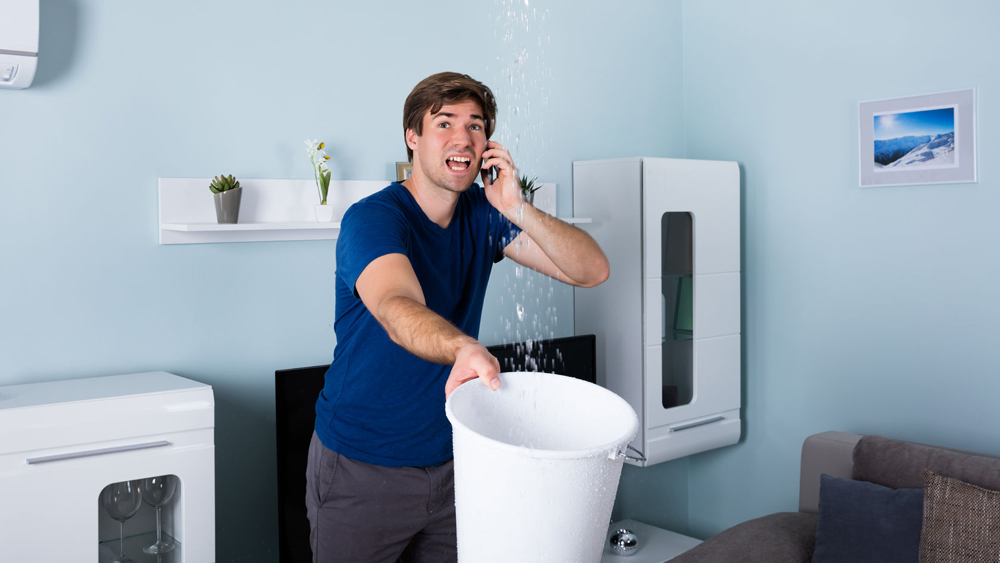Unveiling Common Sources Behind Residential Water Leak Issues
Unveiling Common Sources Behind Residential Water Leak Issues
Blog Article
Just about everyone is bound to have their personal thinking when it comes to How to detect water leaks in your home.

Leaks not just cause waste of water but can additionally create unneeded damage to your home as well as promote undesirable natural growth. Unfortunately, water leaks could go unnoticed because a lot of the pipework in our house is concealed. By looking as well as recognizing for everyday circumstances that trigger leaks, you can shield your home from future leaks and unneeded damages. Today, we will take a look at 6 leak causes that may be causing your pipelines to trickle.
Elbowing in origins
Many water leakages begin outside the house as opposed to inside it. If you discover an unexpected reduction in water stress, say in your tap, take time to head out and also analyze your lawn. You may discover wet spots or sinkholes in your backyard, which may mean that tree origins are getting into water lines causing water to leak out. You can have your plumber check for breach, particularly if you have trees or hedges near your home.
Rusty water supply
This might be the reason of discoloration or bending on your water pipes. If our plumbing system is old, take into consideration replacing the pipelines since they are at a greater threat of rust than the more recent designs.
Malfunctioning Pipeline Joints
Pipeline joints can weaken over time, resulting in water leaks. If you have noisy pipelines that make ticking or banging sounds, particularly when the hot water is turned on, your pipeline joints are most likely under a lot of stress.
Instantaneous temperature changes.
Severe temperature level changes in our pipes can cause them to broaden and get all of a sudden. This growth and tightening may trigger fractures in the pipelines, specifically if the temperature are below cold.
Poor Water Connectors
At times, a leak can be triggered by loosened hose pipes as well as pipelines that provide your home appliances. In situation of a water connections leakage, you might notice water running straight from the supply line or puddles around your appliances.
Obstructed Drains
Clogged drains pipes might be frustrating as well as inconveniencing, however they can in some cases wind up creating an overflow bring about burst pipelines. Keep eliminating any kind of materials that might drop your drains pipes that can obstruct them to stay clear of such aggravations.
All the above are causes of leaks yet not all water leakages result from plumbing leaks; some leakages could come from roofing system leaks. All leakages must be repaired right away to avoid water damages.
Leakages not only create waste of water however can also create unneeded damage to your house and advertise unwanted natural growth. By recognizing as well as looking for daily scenarios that trigger leaks, you can secure your home from future leaks and also unnecessary damages. Today, we will certainly look at six leak creates that may be causing your pipelines to leak.
At times, a leakage can be caused by loose tubes and also pipelines that supply your appliances. In case of a water links leakage, you might notice water running directly from the supply line or pools around your devices.
How To Check For Water Leak In Your Home
How To Check for Leaks
The average household's leaks can account for nearly 10,000 gallons of water wasted every year and ten percent of homes have leaks that waste 90 gallons or more per day. Common types of leaks found in the home are worn toilet flappers, dripping faucets, and other leaking valves. These types of leaks are often easy to fix, requiring only a few tools and hardware that can pay for themselves in water savings. Fixing easily corrected household water leaks can save homeowners about 10 percent on their water bills.
To check for leaks in your home, you first need to determine whether you're wasting water and then identify the source of the leak. Here are some tips for finding leaks:
Take a look at your water usage during a colder month, such as January or February. If a family of four exceeds 12,000 gallons per month, there are serious leaks.
Check your water meter before and after a two-hour period when no water is being used. If the meter changes at all, you probably have a leak.
Identify toilet leaks by placing a drop of food coloring in the toilet tank. If any color shows up in the bowl after 10 minutes, you have a leak. (Be sure to flush immediately after the experiment to avoid staining the tank.)
Examine faucet gaskets and pipe fittings for any water on the outside of the pipe to check for surface leaks.
Undetected water leaks can happen without the home or business owner even realizing. If you suspect a water leak, but not able to find the source. It is time to contact a professional water leak detection service, The Leak Doctor.
How To Find a Water Leak In Your Home
https://www.leakdoctor.com/blog/How-To-Check-For-Water-Leak-In-Your-Home_AE197.html

As an enthusiastic reader on How to detect water leaks in your home, I figured sharing that excerpt was really useful. I beg you take the time to distribute this blog entry if you enjoyed it. Thank-you for taking the time to read it.
Book-Now Report this page